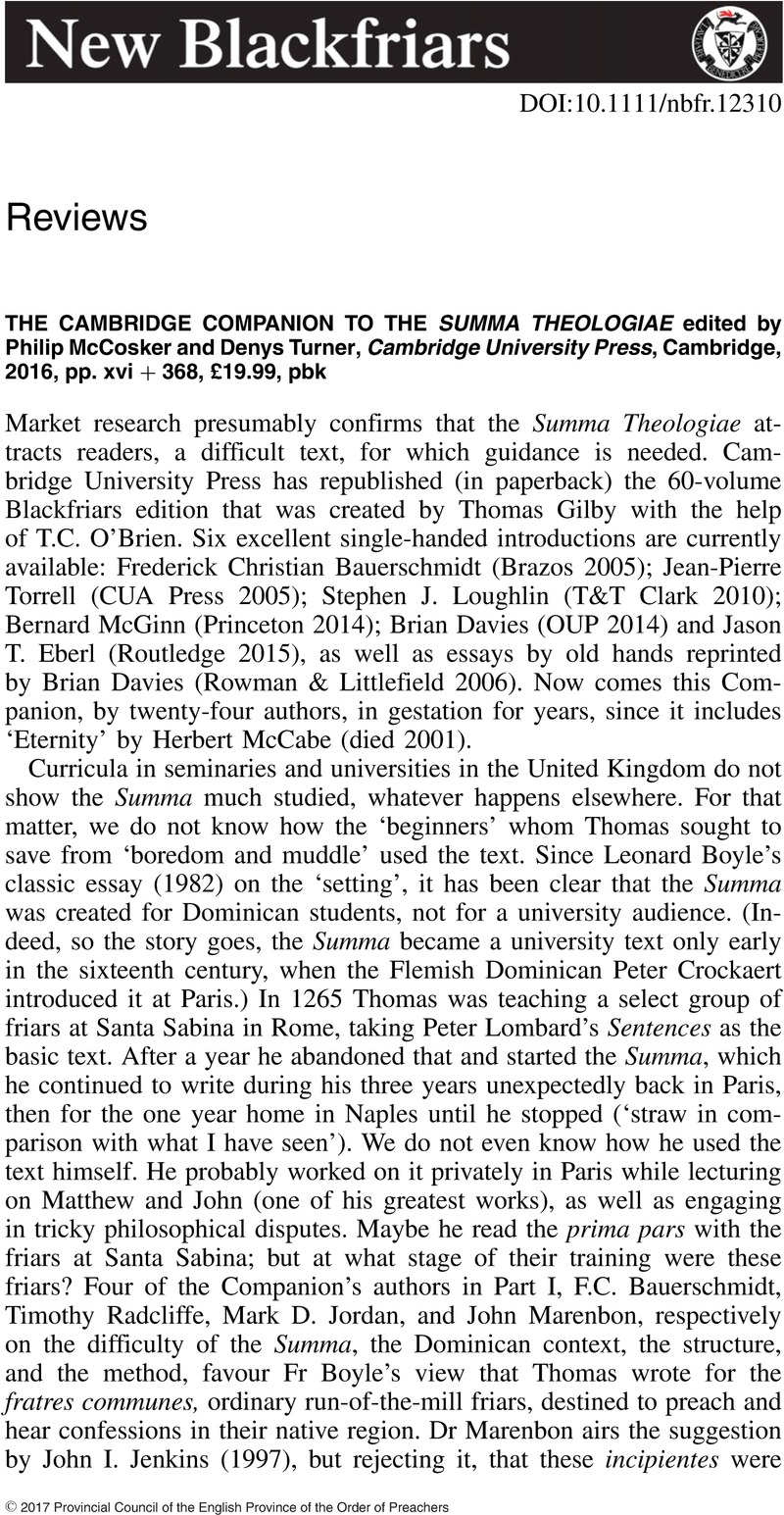No CrossRef data available.
Article contents
The Cambridge Companion to the Summa Theologiae edited by Philip McCosker and Denys Turner, Cambridge University Press, Cambridge, 2016, pp. xvi + 368, £19.99, pbk
Review products
The Cambridge Companion to the Summa Theologiae edited by Philip McCosker and Denys Turner, Cambridge University Press, Cambridge, 2016, pp. xvi + 368, £19.99, pbk
Published online by Cambridge University Press: 01 January 2024
Abstract
An abstract is not available for this content so a preview has been provided. Please use the Get access link above for information on how to access this content.

- Type
- Reviews
- Information
- Copyright
- Copyright © 2017 Provincial Council of the English Province of the Order of Preachers


